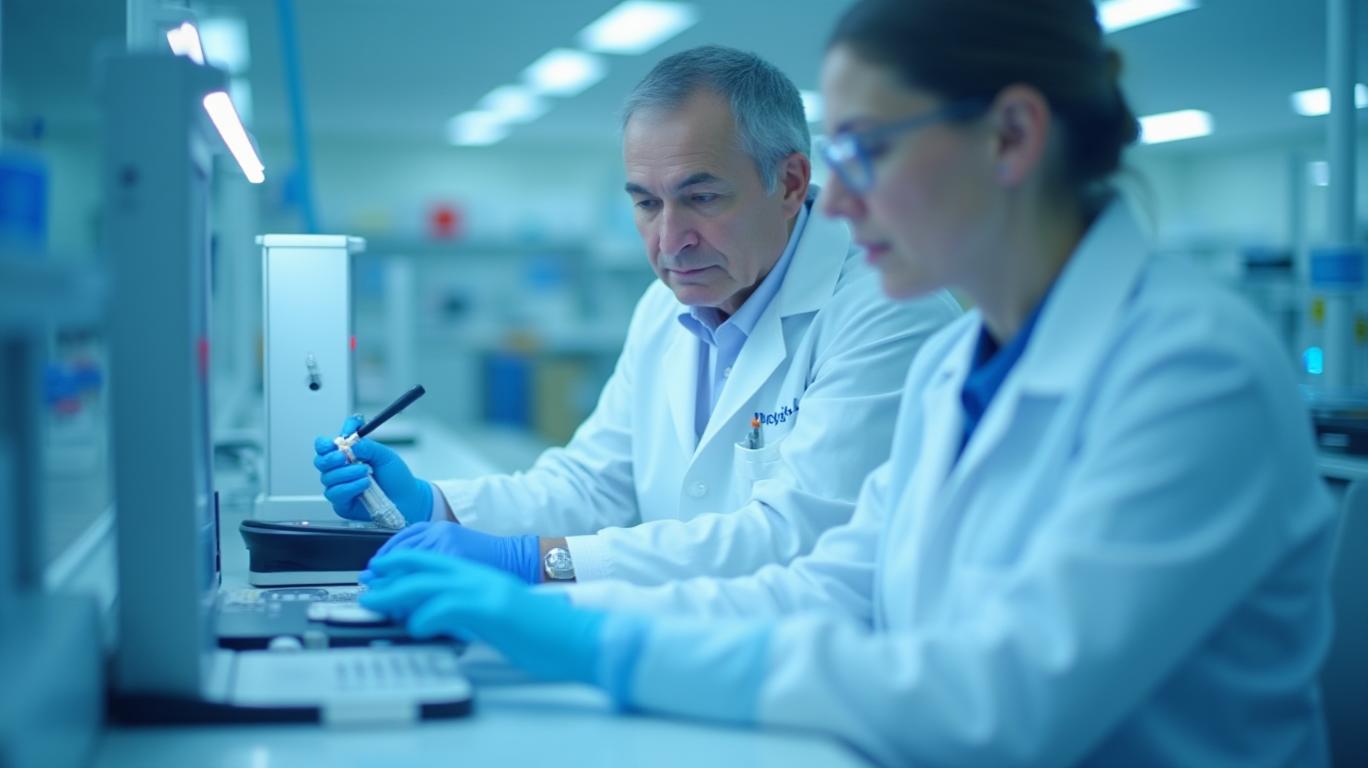MaxCyte Navigates SPL Headwinds with Core Resilience and Strategic Pipeline Momentum
MaxCyte's Q1 2025 results reveal a company navigating short-term challenges with a disciplined focus on its core business and long-term opportunities. While the Strategic Platform License (SPL) segment stumbled, the firm's steady core revenue growth, robust cash reserves, and expanding installed base position it to capitalize on a growing cell and gene therapy market. For investors, the near-term turbulence may mask a compelling entry point into a leader with structural tailwinds.

Core Revenue Shows Resilience Amid SPL Volatility
MaxCyte's core revenue, which excludes SPL-related milestones and royalties, grew 1% year-over-year to $8.2 million, driven by a 13% surge in PAs (Process Analytical Technology) and consumables to $3.87 million. This segment's performance underscores the durability of MaxCyte's installed base, now at 787 instruments (up from 708 in Q1 2024). The growing adoption of its systems—critical for cell and gene therapy manufacturing—suggests recurring revenue streams are strengthening.
The SPL segment, however, faced a sharp decline, dropping 32% to $2.1 million as milestone payments from existing partners slowed. Yet, the addition of TG Therapeutics as the 29th active SPL client signals continued demand.
reaffirmed its full-year SPL guidance of $5 million, which includes both pre-commercial milestones and commercial royalties, suggesting optimism that late-stage pipeline assets will progress toward commercialization.Financial Fortitude and Strategic Priorities
Despite the SPL dip, MaxCyte's balance sheet remains a pillar of strength. With $160 million in cash and equivalents (down slightly from $174.7 million at year-end 2024), the firm has ample liquidity to fund growth. Gross margins held steady at 86% (non-GAAP 83%), and operating expenses were trimmed by $1 million year-over-year, reflecting cost discipline. While the net loss widened to $10.3 million, the EBITDA loss remained flat at $11.2 million, a sign of operational stability.
The integration of SeQure Dx, a diagnostic platform for CAR-T cell therapies, is progressing smoothly. This acquisition positions MaxCyte to serve the full lifecycle of cell therapy development—manufacturing, monitoring, and commercialization—thereby deepening customer relationships and creating cross-selling opportunities.
The Case for Long-Term Growth
The cell and gene therapy market is projected to reach $40 billion by 2030, and MaxCyte is a key enabler. Its proprietary jet-based cell engineering technology is widely adopted in clinical trials, with 38% of all CAR-T therapies in Phase II/III using its systems. The expanding installed base and recurring consumables revenue create a flywheel effect: more instruments sold lead to more consumables purchases and higher chances of SPL partnerships.
MaxCyte's 2025 guidance—8% to 15% core revenue growth—hinges on SeQure Dx synergies and a pipeline of 29 SPL clients. While the SPL segment's variability remains a risk, the firm's focus on high-margin commercial royalties (vs. one-time milestones) could stabilize this revenue stream over time.
Risks and Considerations
The near-term risks are well-documented: macroeconomic pressures, delayed partner milestones, and competition from rivals like Lonza or CCRM. Yet MaxCyte's differentiated technology, strong partnerships, and financial flexibility provide a cushion. The stock's current valuation—trading at ~5x 2025 revenue estimates—suggests the market has already discounted these risks.
Conclusion: A Strategic Buy Amid Volatility
MaxCyte's Q1 results are a reminder that innovation-driven companies often face execution noise. However, the firm's core business resilience, expanding installed base, and strategic moves (e.g., SeQure Dx) position it to capture a larger share of a fast-growing market. With a cash runway extending well beyond 2025 and a valuation that leaves room for upside, now could be an opportune time to invest in a leader of the next-generation therapeutics revolution.
Historical data further supports this long-term thesis: a backtest of short-term strategies—such as buying on earnings announcements and holding for 20 days—showed an average return of -60.9% since 2020, with a maximum drawdown of -64.82%. This underscores the peril of timing the market around quarterly reports and reinforces the need to focus on MaxCyte's multi-year trajectory. For investors with a multi-year horizon, MaxCyte offers a rare combination of defensible technology, recurring revenue streams, and an addressable market on the cusp of exponential growth. The stock's current dip may be the catalyst to act.

Comments
No comments yet